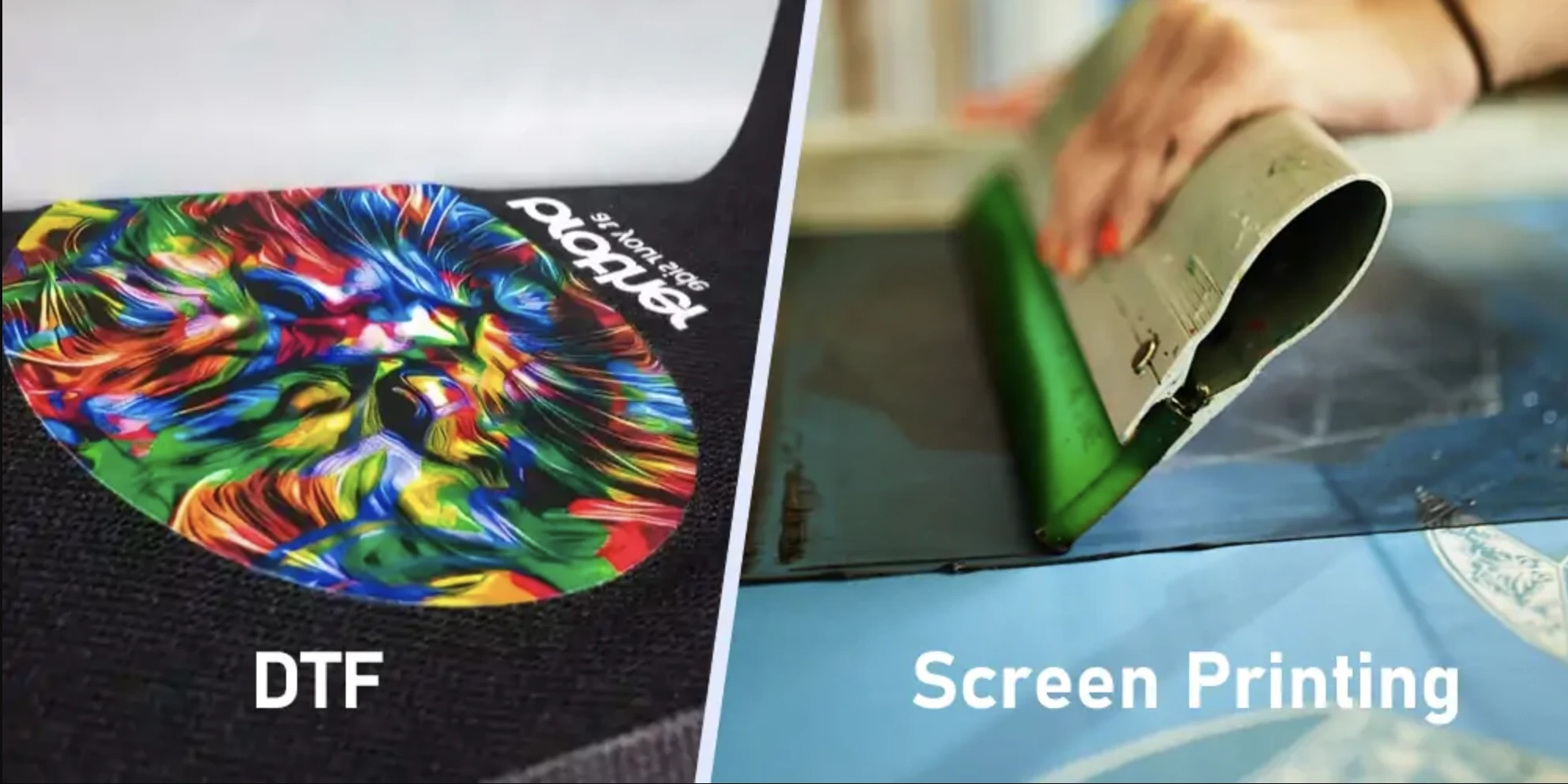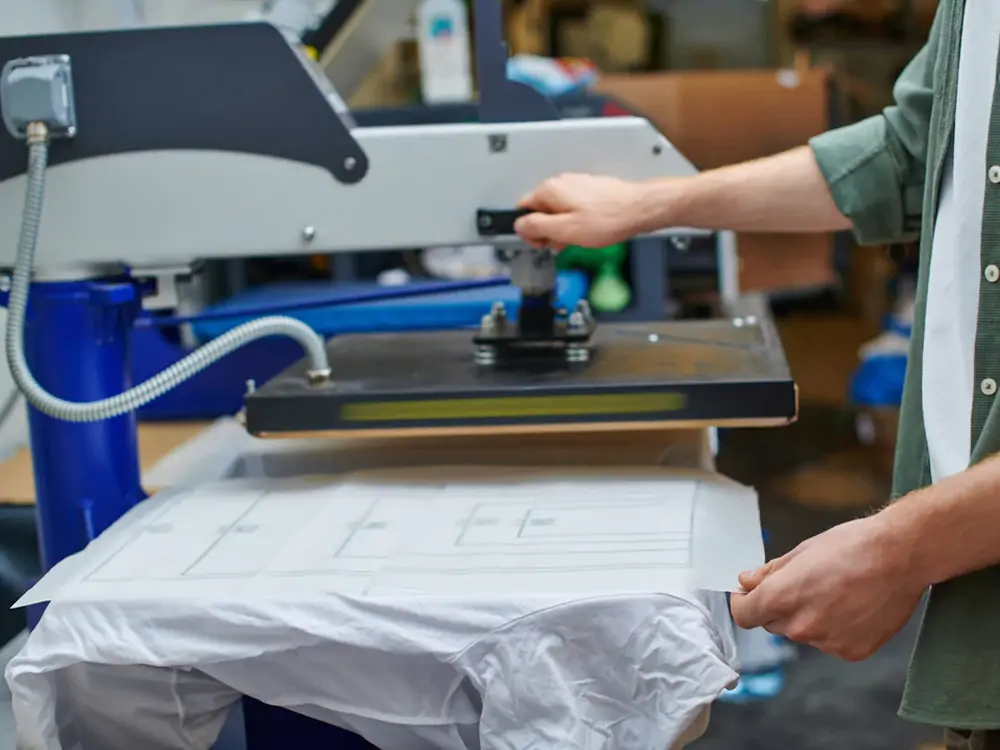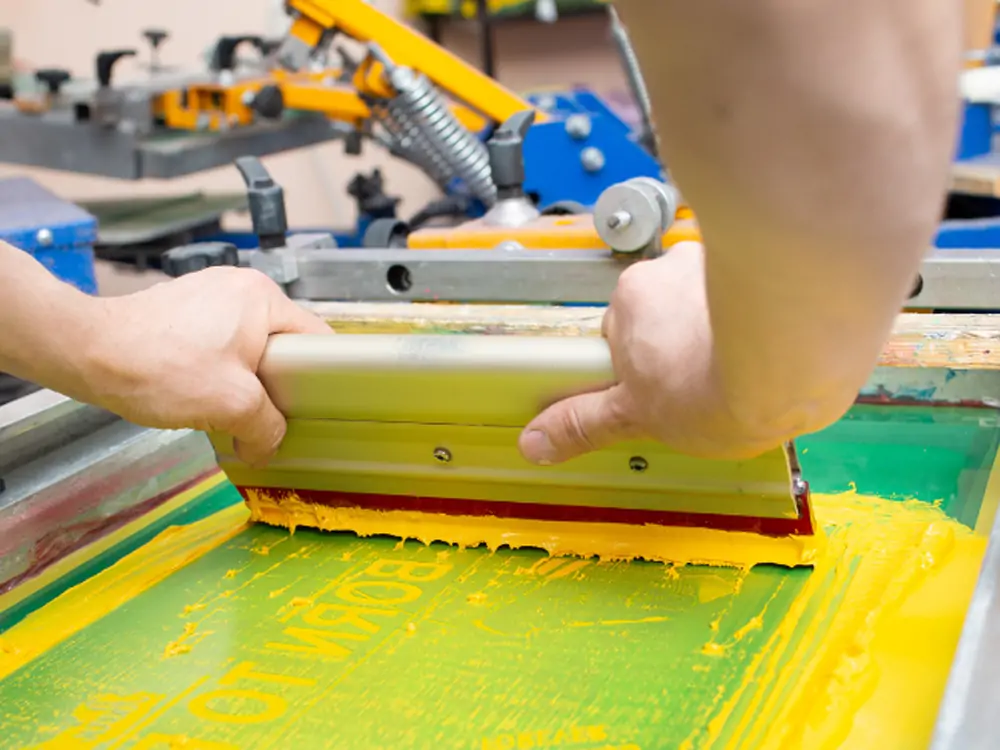
DTF Printing vs. Screen Printing: What's the Difference?
For starting a business that requires printing, a thorough screening is needed to determine which printing process is most efficient for a business type. Many customized printing business manufacturers have utilized various printing processes. For selecting the appropriate printing type, it is essential to understand Screen printing and DTF. Here is the detail of DTF and screen printing, as well as the difference between them.
What is DTF Printing?
DTF printing involves the direct transfer of print on the fabric once the design is pasted on a PET film. The thickness of the film is approximately 0.075 mm to 0.1 mm. The film is transferred to the cotton, nylon, or polyester fabric for printing. RIP Software is used to make the designs and prints for the fabric. Using a new technique, colors as Cyan, Magenta, yellow, and black. CMYK color mode uses white as the base ink. After that, hot-melt adhesive powder is manually or automatically sprayed onto the fabric, binding the image to the fabric with the help of a heat press or oven. Once the design is pasted on the fabric surface, the cooling and peeling is done. The removal of the film from the design surface gave it a more defined, smooth, and finished look.

Here are the advantages and particular applications of DTF printing
- DTF printing does not require preparation for the process; it is a direct-to-film action.
- The cost of the print remains the same for a single print or bulk production.
- So, DTF is suitable for the demanding customized printing business owners. More detailed print is obtained with outstanding reliability and durability.
What is Screen Printing?
A traditional method of printing that uses a stencil or screen for applying color to fabric. This method prints one color at a time. Different meshes are arranged according to designs, and the number of screens depends on the number of colors used in the designs. It is a manual procedure, but over the years, laser engravers have improved the process.

In screen printing, the color is pressed against the mesh and printed one color at a time.
- Screen printing utilizes primary colors that combine to create various color schemes.
- Multiple screens are required for complicated designs, and vibrant color designs are made with screen printing.
- The pores in the mesh define the details that appear on the fabric, usually medium mesh counts (110-160 TPI), higher mesh counts (160-400 TPI), and lower mesh counts (40-110 TPI).
Drying the first layer of ink in UV light is crucial because the next layer cannot be applied unless the first layer is thoroughly dry.
What Makes Screen Printing Different From DTF?
The process of screen printing and DTF has practical applications. Both methods have their pros and cons in the print industry. Certain aspects determine the differences between the printing processes.
Quality
People in the printing business must know that the processes of screen printing and DTF produce high-quality products. DTF printing is an innovation in the world of fabric printing. The quality of the print is better than that of screen printing for the following reasons:
| Feature | Screen Printing | DTF |
|---|---|---|
| Design | Simple, textured, bold designs | Superior quality with vivid colors and intricate details |
| Fabric | Cotton and blended fabrics (e.g., T-shirts) | Silk, denim, nylon, cotton, and more |
| Durability | Highly durable, survives many washes | More fragile, requires careful washing |
| Time | Time-consuming for high-quality products | Efficient, rapid production of large quantities |
In DTF, ink does not penetrate the fabric; therefore, the print feels more detailed as compared to print obtained from screen printing. DTF prints are more image-like than screen prints; screen printing cannot replicate the details and quality of DTF.
Design Complexity
DTF is similar to pasting an image on film; a predesigned image is applied to the fabric using a heat press. DTF creates detailed multi-color photos easily. Screen printing, on the other hand, is better for fewer colors. Adding a new color means using a new mesh screen, which takes more time. By utilizing the DTF method of fabric printing, you can create intricate and complex designs. At the same time, screen printing is suitable for logos and typography. Manufacturers in the printing industry should utilize DTF for printing detailed images. For simple designs, screen printing is an appropriate option.
Minimum Order Quantity
In the printing business, there has been a significant advancement in creating customized products, such as shirts, hoodies, and jackets.
- DTF is the best procedure for a company that produces only one product of its kind.
- As screen prints are more durable and reliable than DTF prints, they are not appropriate for single-print business ideas.
- They are applicable for making 12 to 100+ print pieces for a business.
The installation cost and time-consuming nature of screen printing make it suitable for bulk production. In this process, the price per print is very low compared to DTF.
Durability
The time during which the fabric’s prints remain intact is a measure of the print’s durability.
- In this regard, screen printing is the process in which the color penetrates the fabric, giving the print a smooth texture. This will enhance the durability of the printed fabric.
- Screen-printed t-shirts and fabrics are more durable than those printed using DTF technology.
- 5-8 years is the average duration of screen-printed fabric if it is adequately maintained.
- Small business owners should keep in mind that DTF is not durable; however, the print does not crack or fade after washing.
Production Time and Speed
Assessing production time and speed is crucial during the installation of any equipment in any industry. This process is divided into several steps.
- It takes 7-10 business days to fulfill an order.
- On average, DTF can print one linear yard in 6-10 minutes. You can use only one screen at a time for one color. If the design to be printed is of many colors, there is a need to change the screen or reuse the previous one. Every screen took 60-70 seconds for pasting and 2-3 hours for complete drying. The end product is very smooth and finished, but it is time-consuming, and the production rate is relatively low compared to DTF. DTF is quite efficient in this regard, as it produces a greater number of prints very quickly. We have the opportunity to redesign the print at the last moment, just like with screen printing.
Fabric Type
Understanding the best type of fabric for each printing method will produce the best results. In the past, screen printing mainly used cotton, silk, or fabric blends. This was because screen printing needs a smooth surface. So, the fabric choices were limited to cotton or blends. Other fabrics often needed extra preparation. Modern technology has enabled the printing of a variety of cloth types. These include nylon, fleece, blends, cotton, and canvas. You can also print on materials like wood and glass with DTF printing—also known as direct-to-film printing, where the designs are directly printed onto the surface. The textured fabrics can be printed by using this method.
Cost Required
Estimating the cost of installing the required equipment is crucial before launching any firm. Both screen and DTF printing methods are efficient in their ways; the cost of DTF is more cost-effective for smaller setups. The price per print remains the same in bulk orders.
- The initial cost for installing the screen-printing setup, which involves ink, a screen, and mesh, is around $16,000. The initial cost is very high, but screen printing is effective for bulk production.
- On the other hand, installing a DTF printer requires a range of $1500 to $3,000, but the cost per print remains the same, making it not ideal for bulk production.
Sustainability
The world is shifting towards sustainable resources over the years. The process that produces less waste is most preferable. In the printing process,
- DTF is the one that does not require water or other chemicals for its preparation. It is not a completely waste-free procedure as it involves adhesive for the complete printing process.
- However, during the entire printing process, screen printing uses a significant amount of chemicals and water.
- DTF is a more sustainable procedure than screen printing. This process is more eco-friendly in terms of producing fewer plastics than DTF printing.
Conclusion
The process of fabric printing has undergone significant evolution. Screen printing is a popular technique. It has vibrant hues and durability. Large-scale production is another excellent use for it. It is a labor-intensive and time-consuming process that requires considerable effort to complete. Screen printing is a durable and reliable process. On the other hand, DTF is a contemporary and adaptable procedure. It makes printing intricate, full-color designs simple. It is similar to applying stickers, which can be used on any surface. For small firms that specialize in bespoke and on-demand printing, it’s more economical, quicker, and more adaptable. Small business owners prefer using DTF printing for the customization process. DTF prints might not last as long as screen-printed ones. But DTF is efficient, has lower setup costs, and can print complex images.